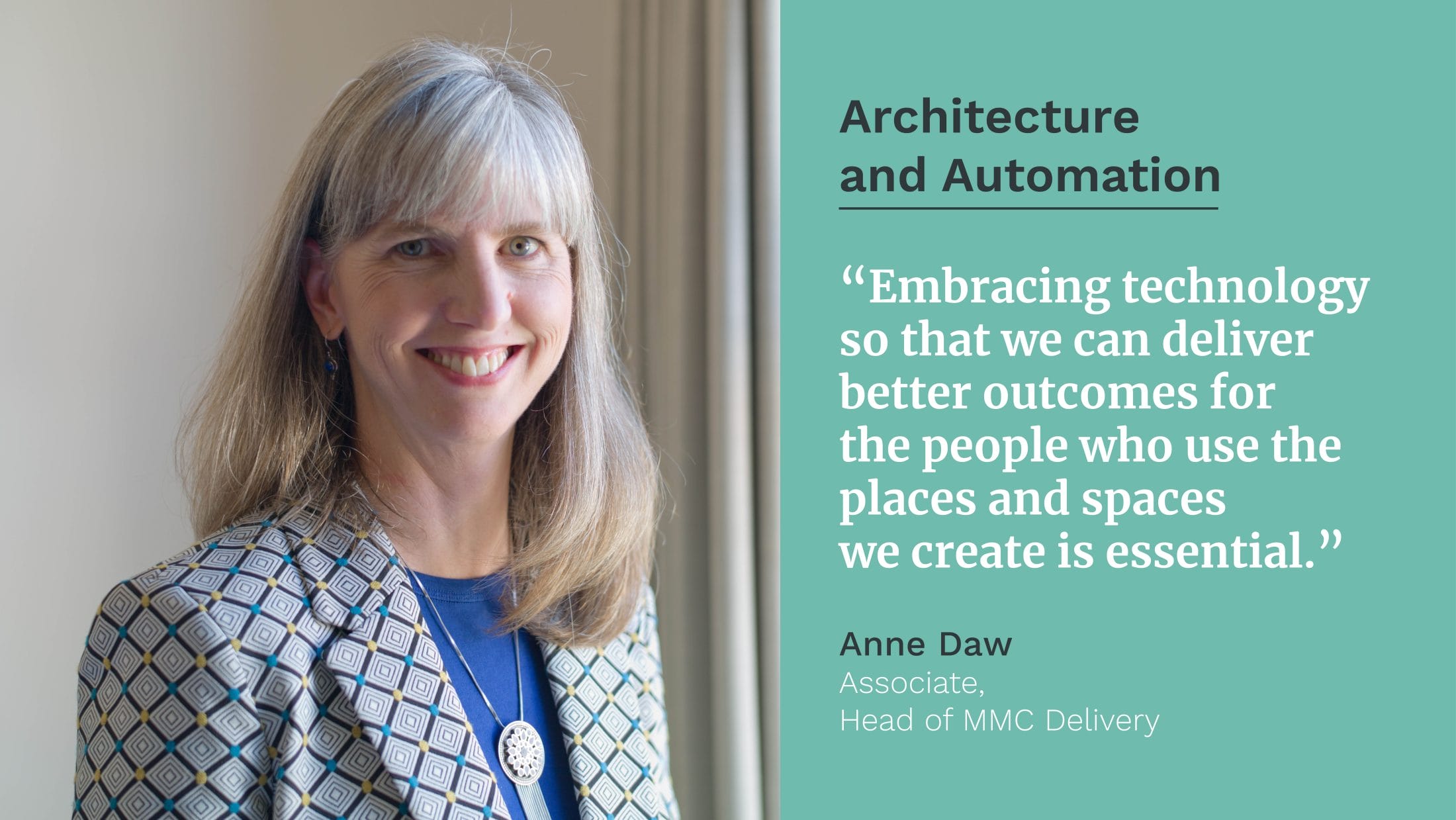
As the construction sector changes how they build, architects will need to keep pace. With the advent of Platform Design for Manufacture and Assembly (p-DfMA) components, whole life carbon targets, and digital design configurators, the way we design and the way we engage with contractors and clients is changing. Already, our design responsibilities are evolving to facilitate p-DfMA and the way we use BIM to collaborate and engage with the team.
“We should pour our efforts into creating more sustainable architecture and spaces that support health, wellbeing, and joy with the help of our new digital tools. Equally, we could and should seek out the new ways that architects can become invaluable in the new p-DfMA processes.”
In the longer term, if we don’t act, architects may see our roles start to shrink as clients, developers, and contractors take on architects’ traditional roles with the aid of new digital technology.
New design tools have been developed that can test hundreds of layout options in a matter of minutes and output a full building on a site along with a programme, cost, and bill of materials without ever having an architect or QS involved in the project. These tools have improved so much in the last five years that it is arguable that they do a better job of evaluating hundreds of options for a site layout in a fraction of the time that it would take an architect to do the same. But does this really replace what we do as architects?
Architecture is fundamentally a profession about people. HLM’s tag line is ‘Thoughtful design to make better places for people’ and it is exactly this that sets architects and Architecture apart from machine automated design.
Imbedding architecture with equity, inclusivity, sustainability and delight is something that it will take artificial intelligence a long time to replicate, if it ever actually does. But at the same time, which one of us has not moaned to ourselves that architecture is only a small fraction of what we actually do every day? In the daily grind of producing a building design, we often go through long periods of tedious tasks before returning to a short interlude of what we actually love to do. If technology can simplify optioneering, building detailing and fabrication design, or streamline our collaboration with contractors, we should be able to capitalize on that to create more time to focus on the part of architecture that we enjoy and is most important to our profession.
We should pour our efforts into creating more sustainable architecture and spaces that support health, wellbeing, and joy with the help of our new digital tools.
Equally, we could and should seek out the new ways that architects can become invaluable in the new p-DfMA processes. Our skills in problem solving, understanding of complex systems, managing multidisciplinary teams, and our people skills make us highly qualified to become invaluable players, if we readily embrace the opportunity.
Finally, it is important to realize that because demand far outweighs productivity in the construction sector at the moment, any increase in productivity will be met by the demand. That means that through p-DfMA and all forms of MMC, we can increase construction sector jobs by increasing productivity of the industry, even if certain tasks become automated in the process. This is of course provided that there is funding available to pay for the demand. That is an easy assumption in the private sector, where demand and funding are inextricably linked, but funding in the public sector is finite and may not meet the current demand when the supply is increased.
Interestingly, one key to unlocking more funding in the public sector could be p-DfMA. By shortening the length of time it takes to deliver a building, its funding can be more closely linked to political and funding cycles. When projects are funded and the outcome is more immediate, the political capital is increased.
The effect of this could be immeasurable in democratizing public funding of our social infrastructure. And that will in turn support what is fundamentally human about Architecture.
The focus of HLM’s practice is to make architecture that serves people. Embracing technology so that we can deliver better outcomes for the people who use the places and spaces we create is essential. Technology can help us put more focus on the impact on people, give us more time to design and to think about the lived experience in buildings.
It is vital that our profession adapts to embrace technology and use it to enhance the value we deliver, or it will become irrelevant.



